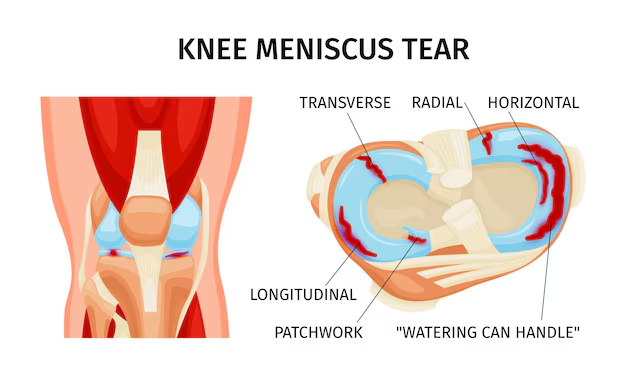Septic Arthritis: Understanding and Managing with Ayurveda
Introduction
Septic Arthritis: Understanding and Managing with Ayurveda is a serious condition characterized by inflammation of the joints due to infection, often leading to severe pain, swelling, and reduced mobility. While conventional medicine offers various treatments, including antibiotics and surgical interventions, many people are turning to alternative therapies like Ayurveda for a holistic approach to healing. This blog explores the principles of Ayurveda in the context of septic arthritis, including potential remedies, dietary guidelines, and lifestyle changes that can support recovery.
Understanding Septic Arthritis

Septic arthritis occurs when bacteria or other pathogens enter a joint, leading to inflammation and potentially damaging the cartilage and bone if not treated promptly. Common symptoms include:
- Severe joint pain
- Swelling and redness
- Fever and chills
- Limited range of motion
Risk factors include existing joint diseases, recent joint surgery, and certain medical conditions like diabetes. Diagnosis usually involves physical examinations, imaging tests, and joint fluid analysis.
The Ayurvedic Perspective
Ayurveda, an ancient Indian system of medicine, views health as a balance of the body’s three doshas: Vata, Pitta, and Kapha. In the case of septic arthritis, the focus is on reducing inflammation, clearing infection, and restoring balance.
Dosha Imbalance
Septic arthritis is typically associated with an imbalance in the Kapha dosha, which governs structure and fluid in the body. An excess of Kapha can lead to stagnation and inflammation. In some cases, Pitta dosha, associated with heat and metabolism, may also play a role, especially if there is a high fever present.
Ayurvedic Treatments for Septic Arthritis
1. Herbal Remedies
Several herbs are known for their anti-inflammatory and antibacterial properties, making them suitable for managing septic arthritis:
- Turmeric (Curcuma longa): Contains curcumin, which has strong anti-inflammatory properties. It can be consumed as a spice in food or taken in supplement form.
- Ginger (Zingiber officinale): Known for its ability to reduce inflammation and pain. Ginger tea or fresh ginger can be beneficial.
- Ashwagandha (Withania somnifera): An adaptogen that helps in stress reduction and has anti-inflammatory effects.
- Triphala: A blend of three fruits, known to detoxify the body and improve digestion, which is essential for nutrient absorption.
- Boswellia (Boswellia serrata): This herb has been shown to reduce joint pain and inflammation.
2. Panchakarma Therapy
Panchakarma is a detoxification process that involves several treatments to cleanse the body of toxins. For septic arthritis, certain therapies may be particularly beneficial:
- Basti (medicated enema): Helps in balancing Vata and reducing inflammation.
- Abhyanga (oil massage): Using warm herbal oils can improve circulation, alleviate pain, and reduce stiffness.
- Swedana (steam therapy): Aids in detoxification and can help relieve joint stiffness.
3. Dietary Recommendations
Diet plays a crucial role in Ayurveda, especially in managing inflammation. Here are some dietary guidelines for those with septic arthritis:
- Anti-inflammatory Foods: Incorporate foods rich in omega-3 fatty acids (like flaxseeds and walnuts), fresh fruits, and vegetables that combat inflammation.
- Warm, Cooked Foods: Favor warm, easily digestible meals over raw foods to support digestion and metabolism.
- Spices: Use spices like turmeric, ginger, and black pepper, which have anti-inflammatory properties.
- Hydration: Stay well-hydrated, but avoid excessive consumption of cold beverages, as Ayurveda suggests that cold can exacerbate Vata imbalance.
4. Lifestyle Modifications
Adopting a balanced lifestyle is key to managing septic arthritis:
- Rest and Recovery: Ensure adequate rest to allow the body to heal. Avoid strenuous activities that put stress on the affected joint.
- Gentle Exercise: Engage in gentle stretching and yoga to maintain flexibility and improve circulation without overexerting the joint.
- Mindfulness and Stress Management: Practices like meditation and pranayama (breath control) can help reduce stress, which is important for overall health.
Integrating Ayurveda with Conventional Treatment
It’s essential to integrate Ayurvedic practices with conventional medical treatments. While Ayurvedic remedies can support healing, they should not replace prescribed antibiotics or medical interventions. Always consult a healthcare provider before starting any new treatment regimen, especially for serious conditions like septic arthritis.
Case Studies and Anecdotal Evidence
Numerous individuals have reported positive outcomes from incorporating Ayurvedic practices alongside conventional treatments for septic arthritis. For example, a patient who underwent a course of antibiotics combined with daily turmeric and ginger supplements noted a significant reduction in pain and swelling, as well as improved mobility.
While scientific studies on Ayurveda specifically for septic arthritis are limited, the anecdotal evidence is compelling. As awareness of holistic approaches grows, more individuals are likely to explore Ayurvedic options for joint health.
Conclusion
Septic arthritis is a complex condition that requires careful management and treatment. While conventional medicine is critical for addressing the immediate infection and inflammation, Ayurveda offers valuable insights and remedies that can support recovery and overall well-being. By understanding the Ayurvedic perspective, utilizing herbal remedies, adopting a balanced diet, and making lifestyle changes, individuals can take a holistic approach to managing septic arthritis. Always consult with healthcare professionals when integrating alternative therapies with conventional treatments to ensure a safe and effective recovery journey.
Final Thoughts
Embracing an integrative approach to health can lead to more comprehensive care and improved quality of life. Whether you’re experiencing septic arthritis or looking to prevent joint issues, the principles of Ayurveda can provide valuable tools for enhancing your health and vitality. As you explore these options, remember that each person’s body is unique, and what works for one individual may differ for another. Always listen to your body and consult with professionals to find the best path for your health journey.








Leave a reply